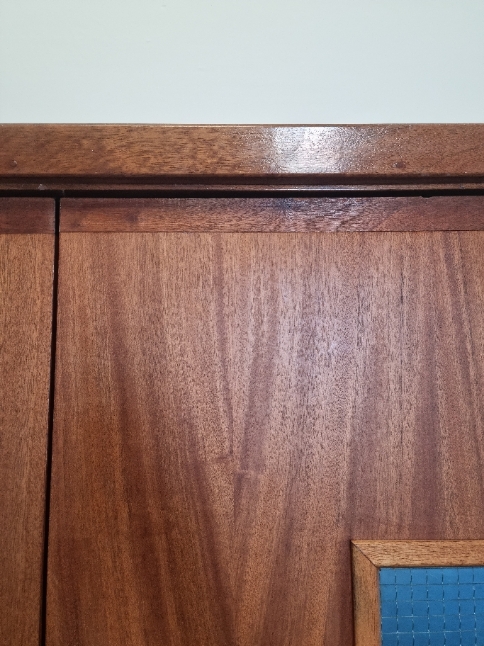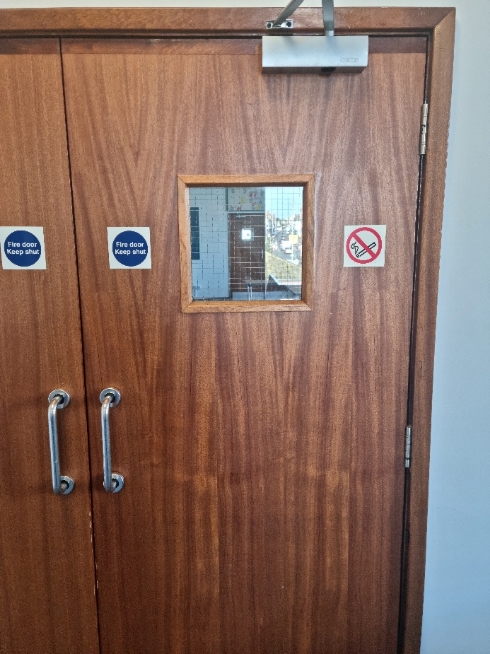
Gorley81
-
Posts
11 -
Joined
-
Last visited
Posts posted by Gorley81
-
-
Evening all,
Looking for suggestions on identifying the manufacturer of the door sets in the attached link:
https://postimg.cc/gallery/dd3dzw9
These are installed across a site, but no documentation is held locally.
BM TRADA coloured plugs are fitted to the top of the doors, but the numbers are unreadable. Label has been routered through, making it illegible.
My main concern is the installation of the top infill panels:
Panels are flush to one face of the frame, with approx. 3–4mm gaps around the perimeter.
Beading has only been installed on one side.
Panels appear to be screwed through the frame into the panel — likely done prior to the frame being fitted, as the screw heads are now inaccessible without removing the frame. Panels have 20mm intumescent seals routered into all four edges.
Has anyone come across a setup like this in a certified system or manufacturer detail? Any insight into whether this might fall under a tested configuration would be greatly appreciated.
Thanks in advance!
-
Evening all, looking for a bit of advice regarding sealing up linear gaps. We have a building at the moment that was built in 2014 and we discovered last week that the linear gaps have not been sealed, most have 30-40mm gaps behind the architrave. Whilst the original architects try to find the original specs for the building I'm trying to find out if any regs documented any guidance on linear gaps. I know we have 8214:2016, and have found that one of the main updates in this was to include guidance on linear gaps. What I'm trying to figure out is what was recommended before this? If anyone could help it would be much appreciated.
-
8 hours ago, Neil Ashdown MAFDI said:
Yes, as you have picked up - the lipping must be flush with the face of the door. So lipping may be replaced or added to the edges of the door but the hardwood must be of the correct dimensions, species, density and fitted with the correct adhesive. This type of 'repair' is very likely to fall outside the scope of the fire resistance performance certification for the door and therefore the certification would become invalid.
Given the age of the doors and past facilities maintenance there is no record of any certification. In my view the best they can ever be is nominal but even that is questionable due to the thickness of the lipping.
Sorry to ask again but I tend to recommend that the door is raised and lipping or drop seal added to base, is this correct or can you add to top?
-
On 17/01/2023 at 06:31, Neil Ashdown MAFDI said:
As Nick T says above, the thickness of the hardwood lipping would very likely be outside the scope of the door's Assessment report for fire resistance were they carrying any evidence of performance. You state that the door is a Nominal fire door which means in the opinion of the 'competent person' that the door has the attributes of a fire door but that there is no evidence of fire resistance performance.
Therefore, whilst it is likely that the door could be non-compliant to its original manufacturer's 'certification' there is no documentary evidence to confirm this in absolute terms. I would advise the Responsible Person to risk assess in terms of how critical are the fire doors to life safety and building safety should they fail to provide their ultimate required fire resistance performance.
Also, the gap between the door top edge and the underside of the door frame head appears to be excessive. Generally, it should be between 2mm and 4mm so there could be an issue with cold smoke spread as well as fire resistance performance.
Also, the door-closer arm configuration is incorrect. The adjustable arm should be at 90 deg. to the door frame head with the tensioning-arm canted over accordingly. Remediating this will very likely improve the door-closer performance.
You are right, I did fail the doors on a couple of issues. Mainly gaps as you spotted, the top was 5mm👍🏻. There were a fair few issues around the whole site.
On 17/01/2023 at 08:08, Mike North said:The fact that the lipping on both leaves appear to be the same would suggest to me that that this was how the doors where manufactured.
The door we can see through the vision panel, does it have the same band at the head? and what about the bottom of the doors?
That's what I thought at first but the lippings don't sit totally flush with face which makes me think it's not factory finished.
About 50% of the doors had lipping on top the rest had none.
I think the main thing I'm asking is if adding lipping to the top of a nominal door is an acceptable method of reducing gaps?
-
Thanks both. I did mark them as nominal, to be fair 99% of the doors in the sector I'm checking are nominal. I made a note that the lipping is excessive but they will still do the job but doesn't conform to current regs.
When I first started I assumed that lipping couldn't be added to top of doors but have seen a few recently where lipping has been added to reduce header gaps. I can only assume that the company had a contractor a few years ago doing this in various premises.
I tend to recommend that the door is raised and lipping or drop seal added to base, is this correct or can you add to top?
-
Came across a few nominals like this today. What's your thoughts?


-
I have fitted a few Perko Powermatics and have always gone by no more than 750mm from floor and within 300mm of a hinge.
Just recently I have been getting called out to door issues that another contractor has fitted the Astra 3003 closer. A couple of these doors have been fairly stiff to open. The closers have been fitted anywhere between 1200-1600 high.
I was under the impression that concealed Closers shouldn't be fitted any higher than 1000mm but cannot find any regs that state this.
On the Astra installation instructions there is no mention of height, I have tried contacting Astra for an answer but getting nowhere.
Anyone have any ideas?
-
Thank you both, certainly agree about courses being black and white!
-
Evening all, looking for a bit of advice if possible. I am fairly new to carrying out Fire Door Inspections and have came across a situation today where in a care home there are various nominal corridor doors with side panels fitted with georgian wired glass installed. The only markings they have are BS6206 B/F which I understand is only showing its Impact rating? There are no fire rating etchings on the glass.
Would these be passed as long no damage to the glass?

Door Set ID & Top Panel
in Fire Doors and Accessories
Posted
Thanks Neil, much appreciated.
I'll do some more digging — looking through Falcon's guidelines, the screw positioning and fixing method do appear to be correct. The only thing that stands out now is the 3–4mm gap around the overpanel, as the documentation specifies it should be fitted tight to the frame with no gaps.
I'll follow up once I’ve got more info on the door manufacturer or any evidence supporting the install.